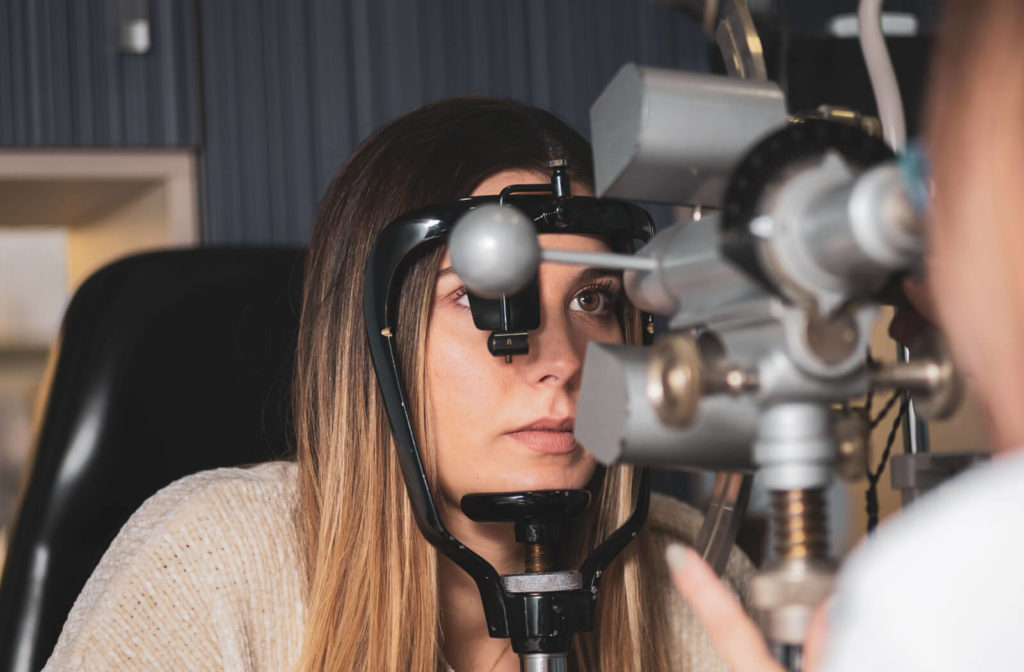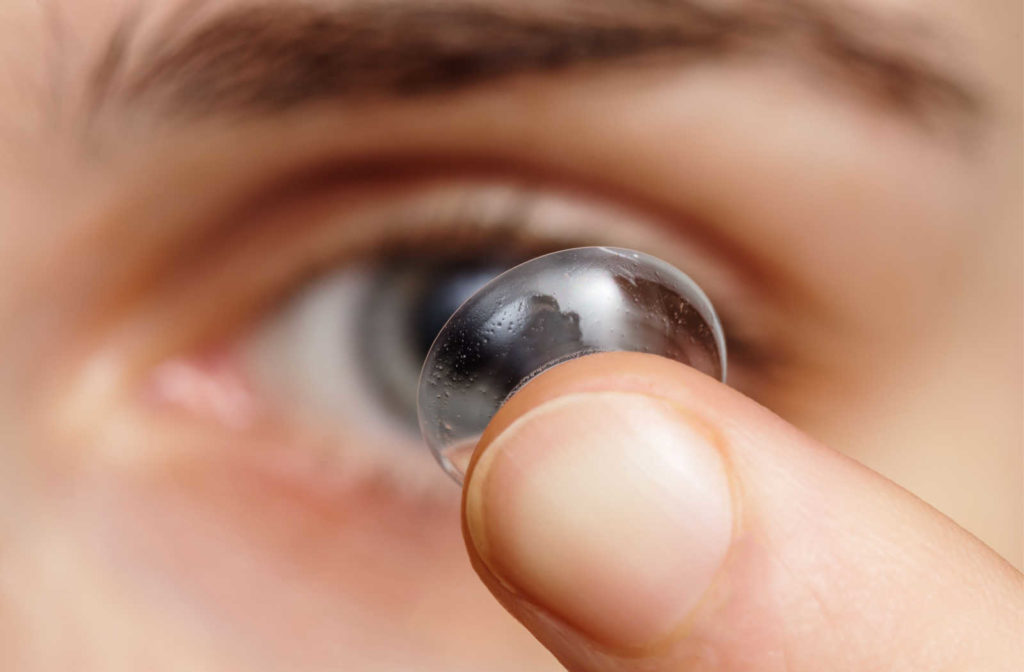Millions of Americans use contact lenses to correct their vision. When used properly, they can offer clear vision and freedom from frames. However, people with certain eye conditions, such as keratoconus or irregular corneas, might be unable to wear standard contact lenses.
Scleral lenses are a type of contact lens designed to cover not only the cornea but also the white part of the eye (the sclera). These lenses are typically larger compared to traditional contact lenses. Due to this large size, scleral lenses can provide a comfortable, stable fit for those with irregular corneas or those who suffer from conditions that cause dry eye syndrome.
Types of Scleral Lenses
Scleral lenses are a type of rigid gas-permeable lens (RGP). They’re relatively firmer than soft contact lenses and have the same advantages RGP lenses usually have over soft lenses. They’re more durable, provide crisper vision, are easier to handle, and have less risk of complications.
Because scleral lenses are larger than traditional soft contact lenses, they’re also less likely to dislodge from your eye while you’re moving around. This stability also means they’re typically more comfortable initially than RGP lenses. Due to the scleral lens’s large diameter, they “vault” over the cornea and instead rest on the white sclera of the eye. The idea is to replace the irregular cornea with a smooth surface to fix refractive errors.
Scleral lenses come in several different sizes, ranging from 14.5 mm up to 24 mm in diameter. Since the human cornea is approximately 11.8 mm in diameter, these sizes can cover the entire cornea easily. These lens sizes are usually split into standard scleral lenses and mini-scleral lenses, typically 18 mm or smaller.
Corneo-scleral lenses split the difference between standard lenses and scleral lenses. They’re useful for people who had laser eye surgery and need contact lenses that offer greater comfort.
Your optometrist will determine the best size of scleral lens for you based on your condition. For example, milder forms of astigmatism or keratoconus typically can be managed with smaller lenses, which can be easier to apply. However, severe conditions affecting your cornea might require larger lenses that can better vault the irregularities in your cornea.
What Conditions Can Scleral Lenses Address?
All scleral lenses work by vaulting over the cornea and leaving a small gap between the lens and the eye. This gap can act as a fluid reservoir that can correct irregularities in your cornea and provide relief for the wearer. The lenses are also gas-permeable, allowing oxygen to reach your eye’s surface and keep it healthy and comfortable.
Many people who normally would be unable to wear contact lenses might find scleral lenses a viable alternative. Scleral lenses can’t “cure” any of these conditions, but they may allow you to wear contact lenses without irritation.
Eye conditions that scleral lenses can be an option for include:
- Dry eye disease
- Keratoconus
- Sjögren syndrome
- Graft vs. host disease
- Limbal stem cell disease
- Filamentary keratitis
- Exposure keratopathy
- People recovering from laser eye surgery
Scleral Lenses and Dry Eyes
One of the biggest benefits of scleral lenses is their ability to help people with dry eye disease. Dry eye is a common condition that occurs when there is a deficiency in the tear film that lubricates the eye. This deficiency can result in discomfort, irritation, and even vision problems.
Scleral lenses can help alleviate dry eye symptoms by providing a barrier between the eye and the environment. The fluid-filled reservoir created by the lens helps hydrate the cornea and reduce exposure to the environment, which may improve comfort and reduce dry eye symptoms.
If you use scleral lenses because you have dry eyes, you may need to put extra time into taking care of your lenses. A person with dry eyes typically produces more mucus, which can collect onto the lens as it sits closer to the edges of your eye. You also may need to use artificial tears to assist the lenses in keeping your eye moisturized and replace them more frequently.

Fitting Scleral Lenses
To be fitted with scleral lenses, you’ll need to undergo a contact lens exam. This exam will typically involve a series of measurements to determine the size, shape, and curvature of the eye. Your optometrist will also assess your overall eye health and check for any underlying conditions that may affect the fit of the lens.
Once your optometrist takes the initial measurements, they will order a trial pair of scleral lenses. You can use the trial lenses to assess the fit and comfort of the lens and check for any potential issues with lens stability. Don’t be afraid to tell your optometrist if your lenses are uncomfortable or if you’re having any problems at all.
If the trial lenses are successful, your permanent pair of scleral lenses will be ordered and fitted.
You should take care of scleral lenses like any other kind of lens. Ensure you wash your hands before ever touching your eye and use a contact lens solution recommended by your optometrist. For scleral lenses, you’ll typically by using preservative-free saline, but your optometrist will take you through proper care instructions after your fitting.
The Right Lenses for You
If you’ve ever had trouble wearing contact lenses or been told your eyes are “hard-to-fit,” scleral lenses could be the right choice for you. Anyone interested in larger, more stable lenses can wear scleral lenses, but they’re particularly helpful for people with irregular corneas or dry eyes.
Our expert team at Foothill Optometric Group offers high-quality, custom care for your unique vision needs. If regular contacts are causing you pain and you think specialty contact lenses might help, book an appointment and find relief today!



